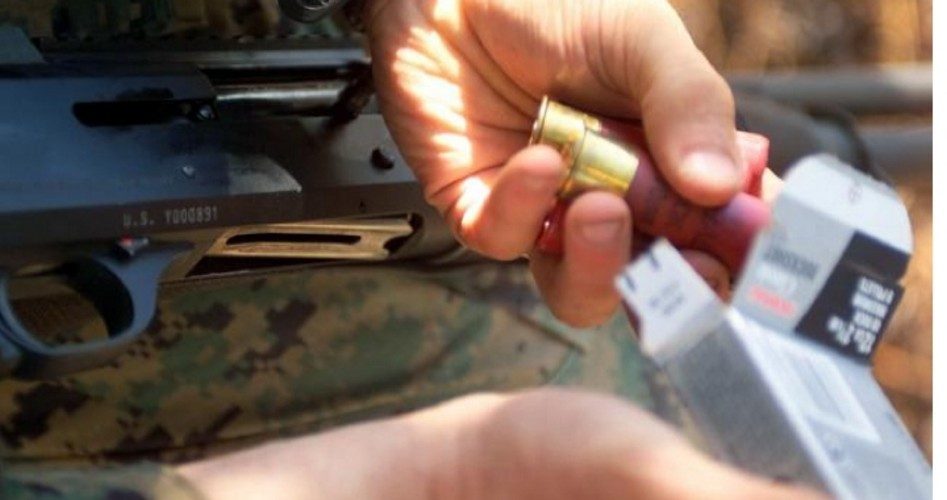
Sitting in church one Sunday morning in 2001, Jim Sable, at age 62 one of the youngest members of his Twin Cities gun club, saw an announcement in the church bulletin: “Mentor needed as a trap shooting tutor.” He jumped at the chance to help reverse the aging trend among his peers. Calling it “divine providence,” Sable started tutoring a 14-year-old girl from the church in the fine art of winging clay pigeons with a 12-guage shotgun. She became the first member of the Orono High School trapshooting team.
By 2010, there were 340 students from around the state of Minnesota taking part in the sport. In 2012, there were 1,500. In 2014, there were 6,100.
So far this year 8,600 high-school students, on 268 teams, are practicing those skills at 165 ranges across the state. Hundreds more have been turned away for lack of facilities and coaches such as Sable. Other states such as Wisconsin and North Dakota have launched their own leagues in preparation for the Minnesota State High School Clay Target League’s championship, the world’s largest shooting-sports event. Another 30 states have inquired about installing similar programs in their high schools.
This despite the anti-gun media’s efforts to denigrate the sport. As John Nelson, a friend and colleague of Sable’s who helped launch the program in Minnesota, said, “Kids, guns and schools. You can imagine the reaction.”
Trapshooting has been a sport since 1750 in England and moved to the colonies in 1831. It also formerly involved real pigeons placed under hats and released at a signal. Clays were introduced in the 1880s as the pigeon population declined. Clay pigeons were first launched by automatic trap machines starting in 1909. It has been an Olympic sport since 1900. A cousin of skeetshooting and sporting clays, trapshooting has two governing bodies, the Amateur Trapshooting Association (ATA) and the Pacific International Trapshooting Association (PTTA).
Tom Koppe, who recently graduated from Hopkins High School, joined a trapshooting team in the seventh grade. Last month he and his teammates competed in the state’s annual clay target state tournament at the Minneapolis Gun Club in Prior Lake. A total of 31 teams from around the state competed — a total of 217 competitors — along with another 100 individual competitors. Koppe noted that “Hopkins [located in Minnetonka, a southwestern suburb of Minneapolis] is not exactly an outdoorsman community … [and] some of the kids thought we all drive trucks [because we must be backwoods people, rednecks, and gun nuts]. I drive a Prius.”
Koppe’s remarks encapsulate the paradigm shift taking place among high-school students, that trapshooting is “cool” and attractive. It also, according to its sponsors, teaches safety, personal responsibility, and teamwork. They learn eye-hand coordination, proper footwork, how to track a target moving across their field of vision at 40 miles per hour, and how to handle competitive pressure.
As Dennis Knudson, a 74-year-old lifelong trapshooter, noted, “This is the best thing to happen to the shooting sports in 50 years. It’s fun to see youngsters stepping up. It will preserve the sport and they’ll do it for the rest of their lives.”
The trapshooting renaissance is reaching many students who have never shot a gun before, some of whom are becoming aware of the war on guns and the Second Amendment in the process of learning how to shoot. And that is helping change the conversation.
When Courtney Olson learned that her son Zac wanted to join the local trapshooting team at Lakeville South High School, she was repulsed at the idea. But once seeing him blossom into one of the school’s top shooters, she not only changed her mind but also helped Zac invest in a $1,400 shotgun and a $600 Glock 17 semi-automatic pistol as well.
Andy Krebs, a classmate of Zac’s, has turned into an ardent supporter of the Second Amendment. Andy said, “I don’t know if I really would have been exposed to that had the team not come to the school.” Now Andy often wears a t-shirt emblazoned with “Free men do not ask permission to bear arms.”
Dennis Taylor, an operations manager at the Wisconsin Trapshooting Association and NRA member, put it this way: “These kids are going to be future legislators, and they’re going to get in there and know the truth about weapons.”
Zac and Andy and their team hit 464 targets out of a possible 500, claiming the first-place trophy as Minnesota champions.
A graduate of an Ivy League school and a former investment advisor, Bob is a regular contributor to The New American magazine and blogs frequently at www.LightFromTheRight.com, primarily on economics and politics.

